- Mudra Meditation
- Bhairava Mudra
- Dhyana Mudra
- Apana Mudra
- Shuni Mudra
- Varada Mudra
- Ganesha Mudra
- Gyan Mudra
- karana Mudra
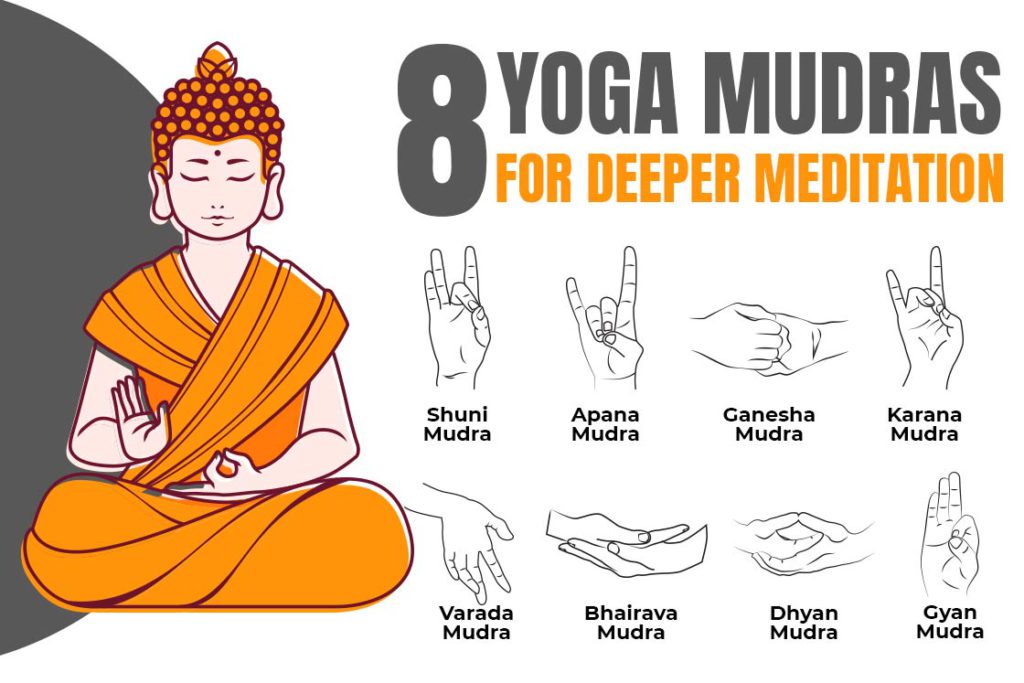
Yoga mudras, or symbolic hand gestures , are powerful practices in yoga and meditation, essential for enhancing and deepening your practice. These ancient gestures have been used for centuries to channel energy, foster concentration, and elevate meditation experiences. Mudras help balance the body’s energy flow, calm the mind, and deepen your connection with your inner self.
Integrating mudras into your meditation can significantly amplify its benefits. While meditation involves more than just closing your eyes, mudras guide and support your journey towards greater awareness. They act as conduits for prana (life force), harmonising mental and emotional states and promoting inner peace.
This article explores the most effective yoga mudras for meditation, their benefits, and how to incorporate them into your practice for enhanced focus, stability, and tranquility.
Why are mudras important in meditation?
Mudras play a crucial role in enhancing your meditation practice. Here’s how they impact your experience
- Deepening Self-Connection: Mudras are symbolic gestures that represent different aspects of the self and the universe. They help deepen your connection with your inner consciousness, boosting self-awareness and spiritual insight.
- Channeling Energy: Mudras direct prana (life force) to specific areas of the body, aligning your energy centers, or chakras, leading to a more balanced and effective meditation practice.
- Improving Concentration: Acting as a physical anchor, mudras minimize distractions and sharpen your focus, making it easier to stay in a meditative state.
- Balancing Emotions: Different mudras affect emotional and mental states, promoting calmness and emotional stability, both essential for a peaceful meditation session.
8 Powerful yoga mudras for deeper meditation
Below are some of the most effective yoga mudras you can incorporate into your meditation practice.
1. Bhairava Mudra
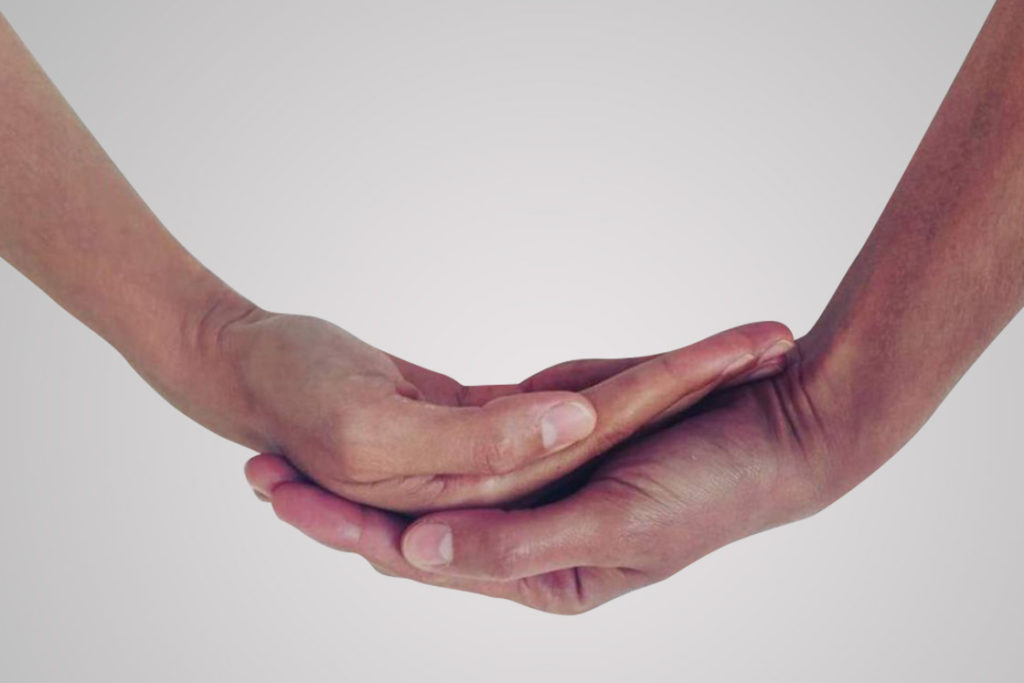
Bhairava Mudra, representing the fierce aspect of Lord Shiva, is a powerful practice for deepening meditation. This mudra helps dissolve ego and negativity, removing mental barriers that hinder self-awareness.
Bhairava Mudra involves placing the right hand over the left hand in a specific way. This simple gesture helps balance your body’s energy and brings a deep sense of calm. It improves your self-awareness and emotional clarity, making meditation more effective and helping you connect better with yourself and appreciate the world.
How to do bhairava mudra
- Sit comfortably in a posture like Padmasana (Lotus Pose) or Sukhasana (Easy Pose).
- Rest your hands on your lap. Place your right hand over your left hand so that the back of your right fingers touches the left palm, and vice versa.
- Maintain this hand position and take a few deep breaths.
- Close your eyes and focus on the Ajna chakra (third eye) to deepen your meditation.
Benefits
- Balances energies.
- Tranquilizes the mind and introduces peace.
- Balances doshas
- Stimulates pranas.
2. Dhyana Mudra
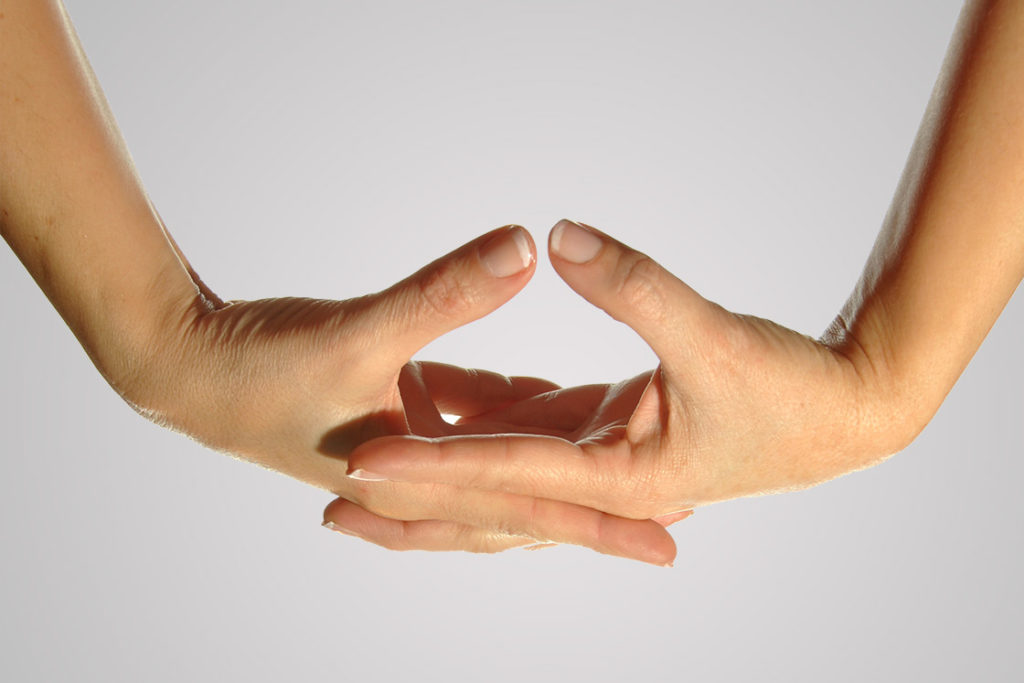
Dhyana Mudra helps you focus better during meditation and allows you to meditate for longer. It creates a sense of calm and stillness, making it easier to stay deeply immersed in your practice. This gesture improves how well you meditate, leading to a more meaningful and focused experience.
Begin with Dhyana, with meditation, and end in Samadhi, in ecstasy and you will know what god is. It is not a hypothesis, it is an experience. You have to LIVE it – that is the only way know it.
– Osho
How to do dhyana mudra
- Sit in a comfortable posture, such as Sukhasana (Easy Pose) or Padmasana (Lotus Pose).
- Place both hands on your lap, with your right hand resting on your left.
- Touch the tips of both thumbs together to form a triangle shape in your palms.
- Maintain this hand position while focusing on your breath to deepen your meditation.
Additional Tip: Dhyana Mudra can also be used during pranayama practices to promote deep breathing. Regular practice, along with exercises like Kapalabhati Pranayama and Bhastrika Pranayama, can enhance its benefits.
Benefits
- Enhance concentration power.
- Reduces unnecessary thought and promotes calmness of the mind.
- Inclined ones towards the spiritualistic growth.
- Promotes right breathing.
Also Read: Palms Up or Down: Which Hand Position is Best for Meditation?
3. Apana Mudra
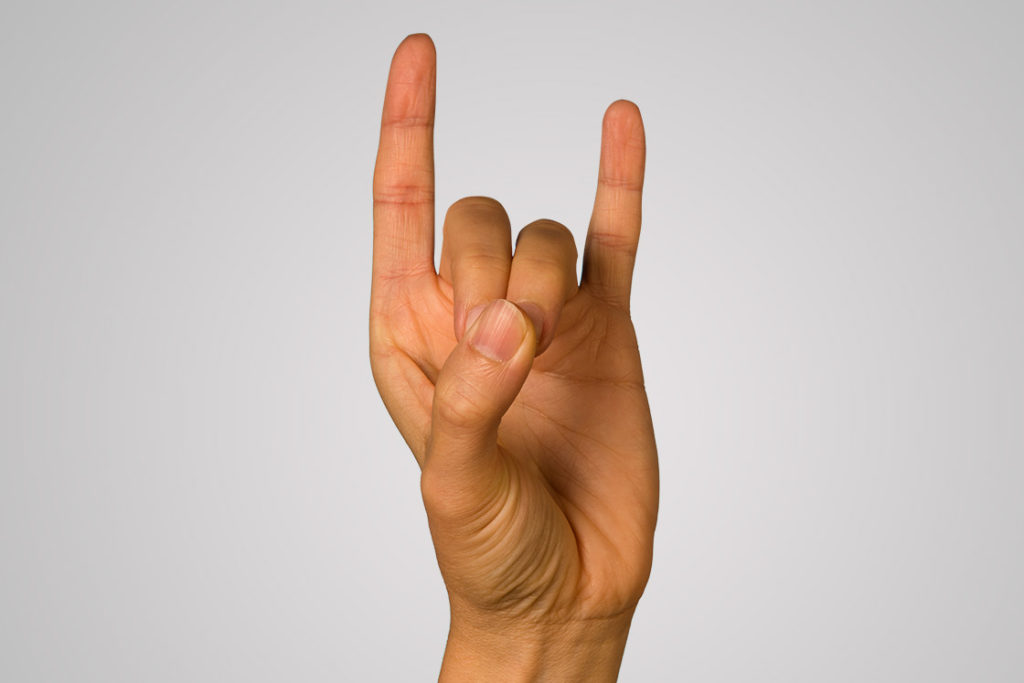
Apana Mudra, named after the Sanskrit term ‘Apana,’ which means ‘downward force,’ aids meditation by supporting the body’s natural elimination processes. This mudra helps to remove toxins and waste from the body, creating a more comfortable physical state for meditation.
By purifying the body, Apana Mudra reduces discomfort and distractions, allowing for a clearer, more focused meditation experience. Additionally, it positively influences mental and emotional aspects, further deepening your meditation practice.
How to do apana mudra
- Sit in a comfortable posture like Padmasana (Lotus Pose) or Sukhasana (Easy Pose).
- Touch the tips of your ring and middle fingers to the thumb, keeping the index and little fingers extended with your palm facing up.
- Maintain this hand position and focus on your breath for a few minutes.
Deep breathing while performing Apana Mudra helps purify Prana through exhalation and strengthens the lungs. Additionally, it balances the Apana Vayu, which enhances the function of organs between the navel and perineum, improving their efficiency.
Benefit
- Helpful in menstrual cramps.
- Strengthens Pelvic organs.
- Helpful in indigestion.
- Boost up the Immune system.
4. Shuni Mudra
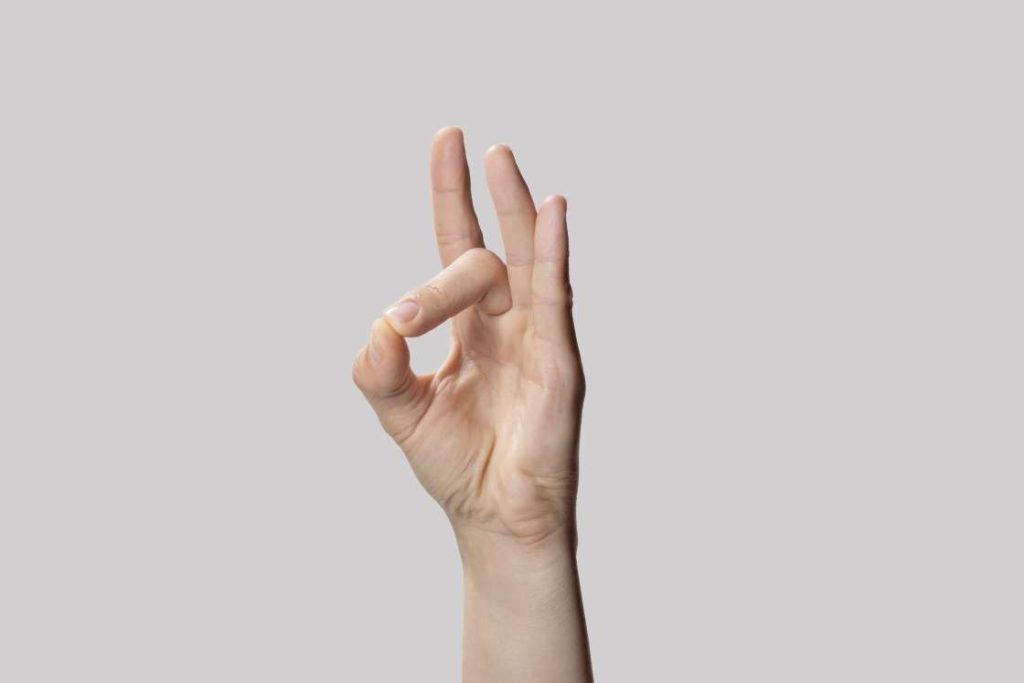
Shuni Mudra, symbolizing ‘openness and emptiness,’ helps balance excess space elements in the body. When there is too much space element, it can lead to a sense of detachment and disconnection from the present moment.
By incorporating Shuni Mudra into your meditation practice, you can shift from a disturbed state of consciousness to a more focused and grounded state. This mudra supports deeper meditation and helps maintain a stronger connection to the present, enhancing your overall meditative experience.
How to do shuni mudra
- Sit in a comfortable posture like Padmasana (Lotus Pose) or Sukhasana (Easy Pose).
- Bend your middle finger and touch its tip to the thumb, applying gentle pressure with the thumb.
- Hold this position and focus on your breath to deepen your meditation.
Shuni Mudra can also be practiced while standing, walking, or lying down, as long as your body remains symmetrical. Using this mudra during meditation helps stimulate the heart chakra, unlocking various benefits related to emotional and spiritual well-being.
Benefits
- Helpful in Heart disease.
- Promotes better hearing and reduces ear pain as well.
- Strengthens bones.
- Provide relief in numbness in the body.
5. Varada Mudra
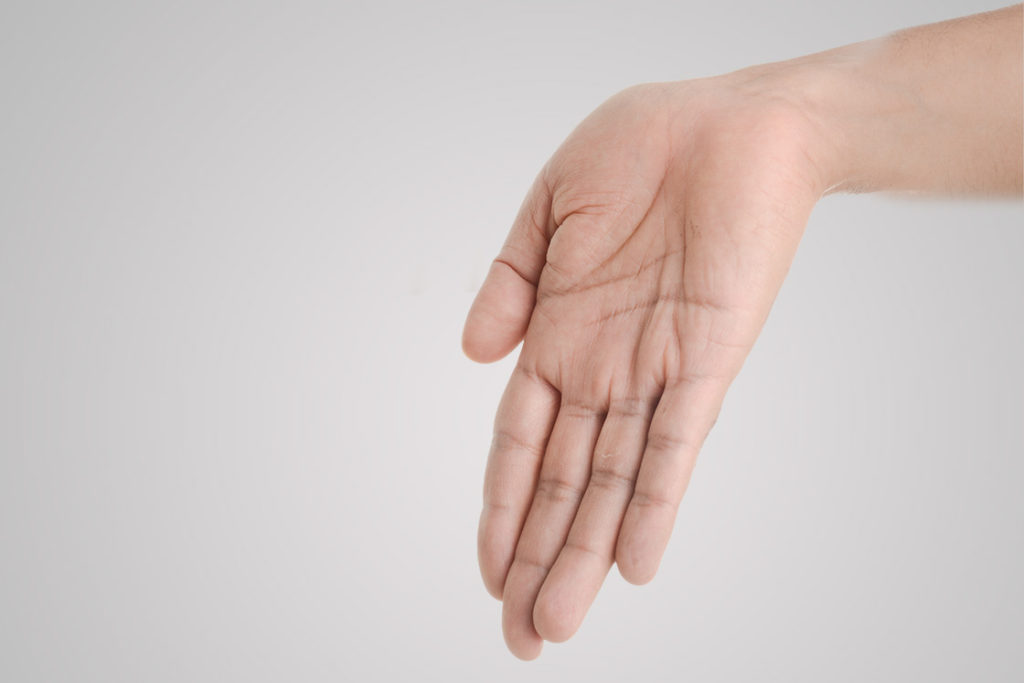
Varada Mudra, the gesture of granting blessings, represents the act of fulfilling the practitioner’s desires and needs. When combined with meditation, this mudra fosters deep compassion and a sense of generosity. The hand gesture, symbolizing a touch to the earth, aligns the practitioner with the supreme, nurturing a sage-like quality.
By practicing meditation with Varada Mudra, you cultivate a state of inner peace and attract prosperity, embodying the essence of a supreme giver.
How to do varada mudra
- Sit in Padmasana (Lotus Pose) with your spine straight.
- Place your left hand on your knee, palm facing forward and fingers pointing down.
- Hold this position for a few minutes or as long as it feels comfortable, then relax.
This mudra has positive effect over the mental health of the practitioners that promotes rightfulness.
Practicing Varada Mudra in meditation positively impacts mental health, fostering a sense of righteousness. For those who predominantly use their right hand, you can practice Varada Mudra with the left hand alongside Abhaya Mudra. Using both mudras simultaneously can enhance your meditation experience, helping you achieve greater peace of mind.
Benefits
- Promotes empathy in practitioners.
- Improve patience against an irritating situation.
- Thrashes negative aspects of someone’s life.
- Develops generosity and morals.
6. Ganesha Mudra

Ganesha Mudra is a powerful hand gesture used in meditation to strengthen the chest muscles and open the heart chakra. By interlocking the fingers in front of the heart, this mudra is believed to clear obstacles and open new opportunities. It helps bring focus to the heart center, fostering love and compassion by activating and balancing the heart chakra. This makes Ganesha Mudra a valuable practice for enhancing emotional openness and personal growth.
How to do ganesha mudra meditation
- Sit comfortably with your spine straight, shoulders rolled back, and chest open.
- Place your left hand at chest level, palm facing outward. Position your right hand, palm facing toward the left hand.
- Interlock the fingers of both hands, creating a clasp.
- Gently pull your hands apart to create a slight tension at shoulder level.
- Release the pressure and maintain the clasped position. Focus on your heart chakra, and optionally chant the Ganesha Mantra (Om Gan Ganapataye Namah) for better concentration.
A good affirmation to ganesha mudra meditation is;
I am the inner consciousness, I identify with the universal life-force within, and it is all that matters.
Benefits
- Enhance metabolism & digestion
- Ganesha mudra meditation boosts self-confidence by opening the heart chakra.
- Reliefs from neck and shoulder pain
- Increases the lung capacity
7. Gyan Mudra
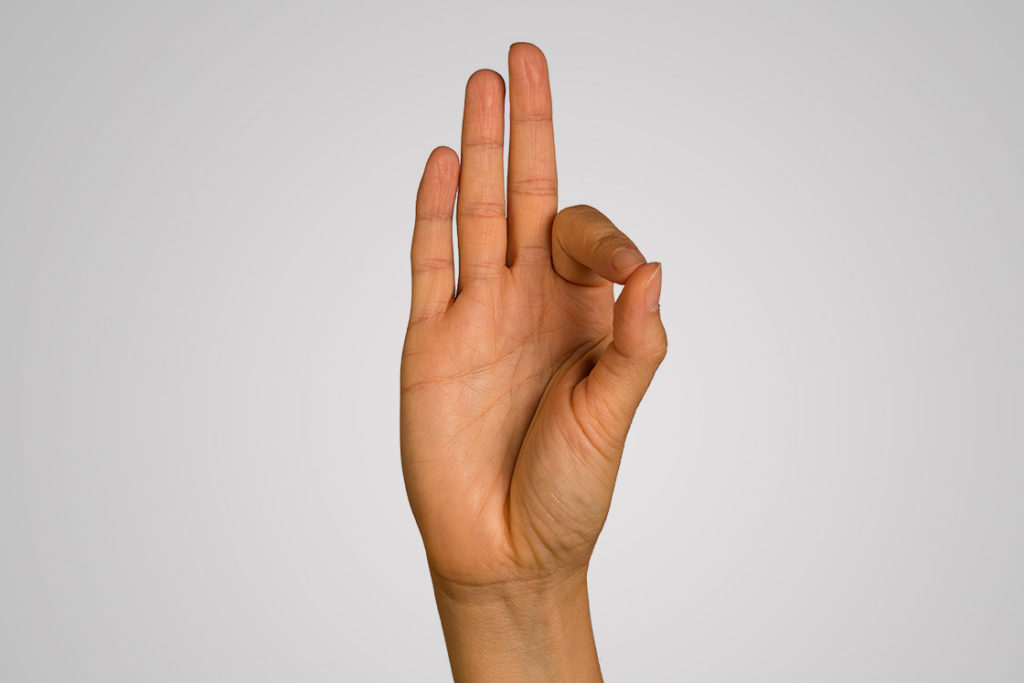
Gyan mudra is most practiced meditation hand mudra. When hands are happened to be in Gyan mudra, the meditation becomes easier. As its name is, Gyana is called to the supreme knowledge one could attain by meditation. It expands the horizon of absorbing knowledge in the state of deep meditation.
The reason for being Gyan mudras’ most used for meditation is very simple; it balances the air element in our body. The air element plays an important role in stabilizing the mind (air is compared to the mind’s thought). When air element happened in its balanced state, the mind becomes easier to control; hence it’s most used for meditation.
How to do gyan mudra meditation
- Sit in a cross-legged posture and align back of head with the spine. If not comfortable sitting cross-legged, sit with straight back on a chair.
- Roll your shoulders back and bring your hands on the knees; palms facing up.
- Join index finger of both hands with respective thumb tip, making uniform circle with thumb and index finger.
- Keep the other three fingers extended straight or loosen in a relaxed manner.
For meditation purposes, hands in Gyan mudra, bring your awareness at the base of the spine to root chakra. Breathing should be gentle. Holding hands in this mudra, when you will be in a deep meditative state, you will observe lightness in the body.
Benefits
- Gyan mudra meditation improves memory and enhances the quality of creative thinking
- It’s beneficial in insomnia, diabetes, Alzheimer, and condition like hypopituitarism
- Gyan mudra meditation regulates endocrine glands secretion so also controls high blood pressure.
8. Karana Mudra
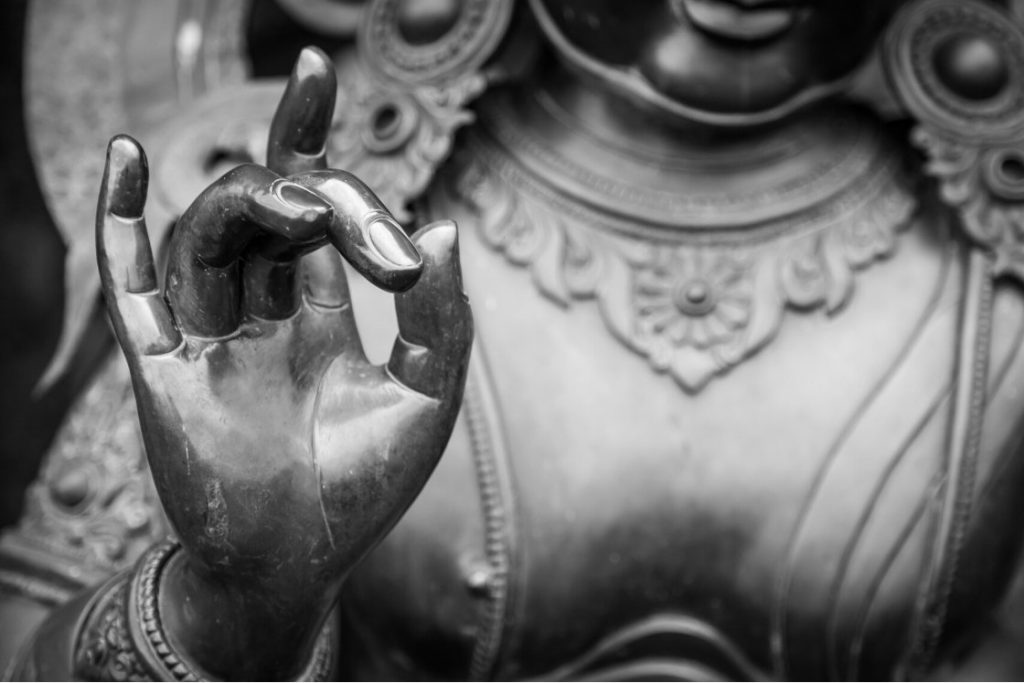
Karna Mudra, a common hand gesture in Buddhist meditation, is often depicted in statues of Gautam Buddha. This mudra is believed to expel negativity and clear emotional blockages from the heart. Practicing Karna Mudra helps to release inner turmoil and fosters a sense of internal peace.
In Tibetan Buddhism, it is used to achieve a deeper state of tranquility and to strive towards enlightenment, reflecting the spiritual journey towards the highest state of consciousness.
How to do karana mudra meditation
- Bring your right hand to the chest level.
- Place it either vertically or horizontally opening the palm forward.
- Flex your middle and ring finger towards the center of the palm.
- Bend thumb inwards to hold down the flexed fingers.
- Straighten the index and little finger then extend them upward.
- Place the left hand on the left knee with palm facing up.
For meditation, it’s best advised to practice Karana mudra with balancing breathing like Sama Vritti pranayama. Using affirmation can increase the meditation efficiency while holding hands in this mudra;
- With inhalation – May obstacles be removed.
- With exhalation – May negative energy be thwarted.
Benefits
- Karana mudra meditation clears the negative chatter from the mind
- Practicing this mudra keeps negativity away from you
- It brings fearlessness to the mind
Conclusion
Meditation is a practice that helps you find peace amidst stress, anxiety, and heavy workloads. By incorporating hand mudras into your meditation practice, you can elevate your sense of tranquility.
When practiced correctly and consistently, mudras enhance your meditation experience, fostering mindfulness and serenity. This, in turn, strengthens your mental resilience, providing protection against the challenges of today’s busy lifestyle.
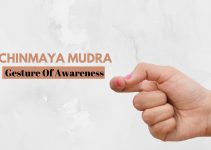
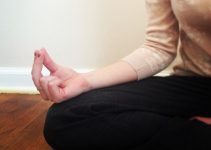
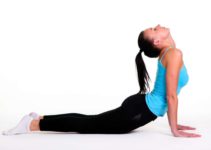


M jab bi Dhyan mudra me hoti hu tb mere srir me ajib sa kampn hota h ,psina aa jata h esa kyuu
Shuni Mudra picture and explanation are different. Please look into that.
Dear Krishna Kutty C, Thanks for reading so patiently and informing same! It has now corrected.